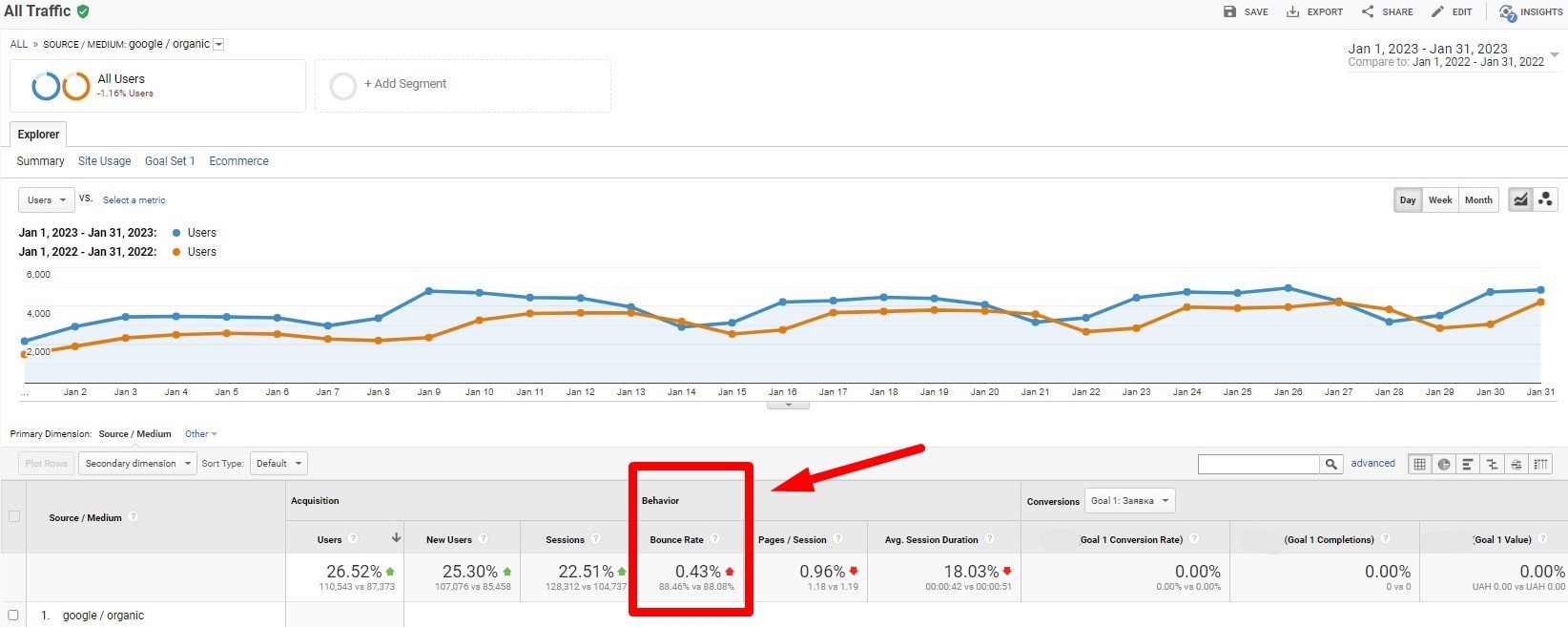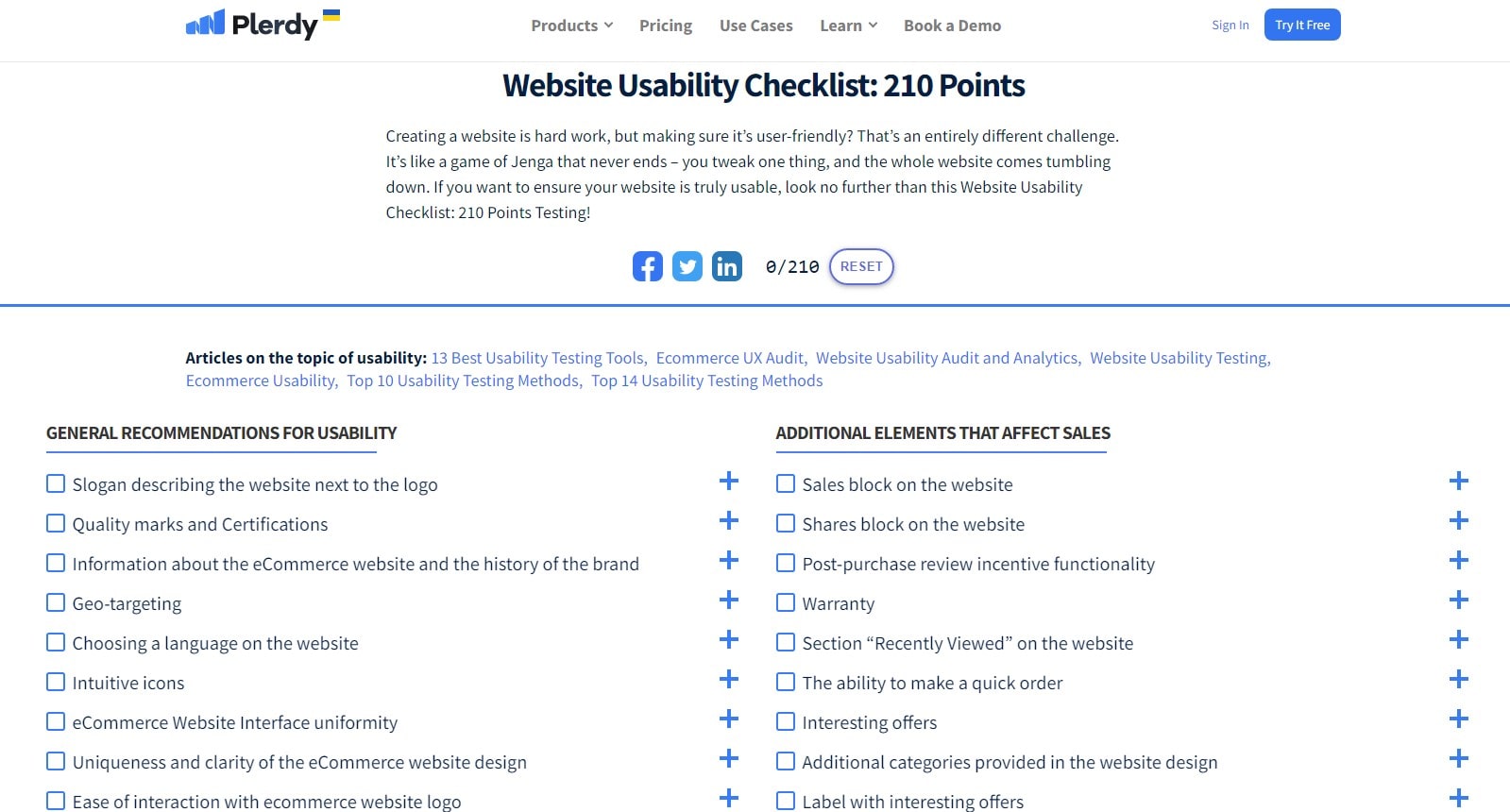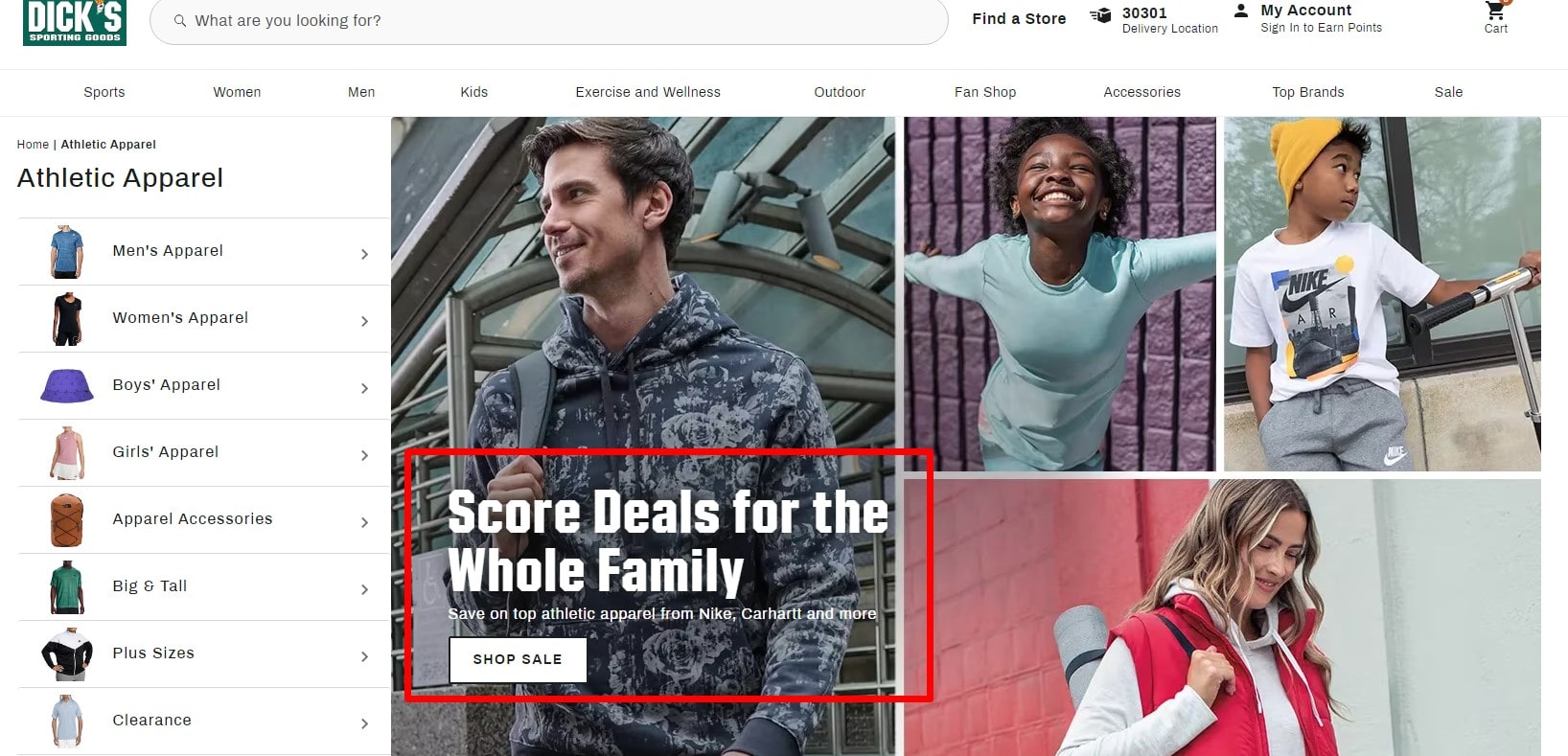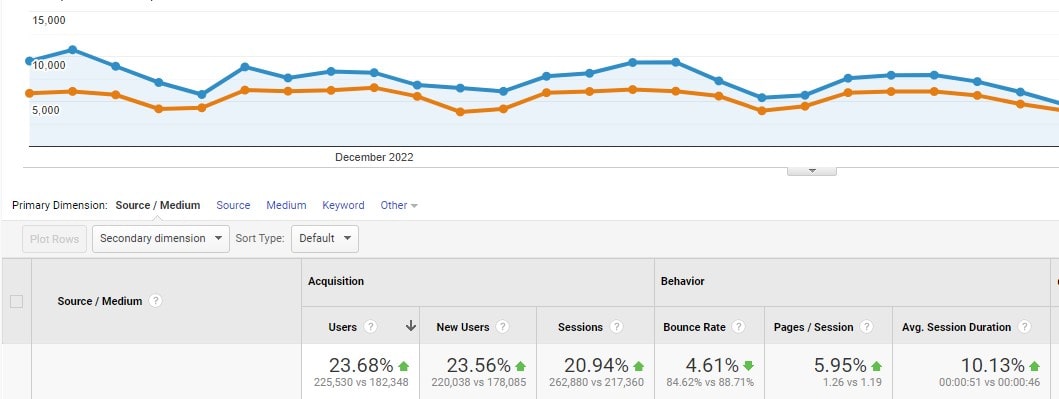Understanding the concept of “bounce rate” is crucial for anyone diving into website analytics. When we mention “bounce”, we’re referencing visitors who land on your site and then exit without further interaction. The “rate” indicates the percentage of these swift exits compared to the total visits. If you’re aiming to grasp:
- Why visitors might quickly leave
- How to interpret this rate
- The importance of refining user engagement

Then you’ve landed in the right spot. As a copywriter, I’ve delved deep into the intricacies of bounce rate and its impact on a website’s performance. Mastering this metric can empower your digital strategy, offering insights to enhance user retention. And while we’re on the topic of enhancing user experience, consider exploring the Plerdy tool—a top-notch solution for CRO & UX. Ready to dive deeper into bounce rate? Let’s roll! 🚀📊🔍
Bounce Rate Defined
Bounce rate stands as a pivotal metric in digital marketing, offering insights into user engagement and website effectiveness. Bounce rates are the percentage of site visitors who leave without browsing. A high bounce rate often signals that a webpage doesn’t captivate its audience—perhaps due to lackluster content or an uninviting layout.
Consider these niche-specific examples:
- E-commerce sites: A customer lands on a product page, doesn’t resonate with the product details, and exits.
- Blog posts: A reader clicks on an article but finds the topic not as compelling as the title suggested and bounces back.
- Service pages: Someone scouting for professional services visits a site, but a cluttered design or vague information drives them away.
Strategies to reduce bounce rate might involve:
- Streamlining website navigation
- Enhancing visuals and layout aesthetics
- Delivering concise, engaging content
As you dive into optimizing your website, keep a keen eye on your bounce rate. It’s a telltale sign of your site’s health and offers an avenue to fine-tune your online strategy. By addressing the underlying issues causing high bounce rates, you can captivate visitors and ensure they stick around longer.
Why It Matters in Web Analytics

In the digital landscape, a website’s bounce rate emerges as a crucial pulse-check for online success. When web analytics roll in, understanding the bounce rate can shed light on user experience, content relevance, and site functionality. For instance, imagine an e-commerce platform with a spike in bounce rates. This uptick can hint at a few scenarios:
- A product page lacking compelling visuals or descriptions.
- An intricate checkout process pushing potential buyers away.
- Slow-loading pages causing users to lose patience and bounce off.
Why web analysts should study bounce rates:
- User Engagement Insight: High bounce rates often flag an immediate disconnect between the site and its visitors.
- Content Effectiveness: A page with a reduced bounce rate likely hits the mark with engaging, relevant content.
- Functionality Check: Bounce rates can spotlight technical glitches, unresponsive designs, or cumbersome site navigation.
When a brand rolls out an ad campaign, a sudden increase in the bounce rate might suggest the content doesn’t match up with the advertisement. Or, for bloggers eager to branch out into fresh topics, a changing bounce rate provides feedback on what resonates with readers.
Tackling bounce rates head-on ensures your website doesn’t just attract traffic but retains and engages visitors. It’s not just about drawing them in; it’s about making them stay. By dialing into bounce rates and web analytics, brands can carve out a more potent digital strategy, keeping users engaged and returning for more.
Delving into the Calculation
Navigating the world of web analytics often feels like a deep dive into an ocean of numbers and ratios. Among these, the bounce rate stands out as a particularly important indicator. The nitty-gritty of calculating the bounce rate hinges on understanding user interactions with a website.
Let’s slice through the jargon:
- Single Interaction: This occurs when a visitor lands on a page and exits without triggering any additional requests to the server during that session. Think of a user clicking on a blog link, skimming the content, and promptly exiting.
- Multiple Interactions: In contrast, this involves a user engaging in multiple activities, like visiting various pages, filling out forms, or making purchases.
Deciphering the bounce rate formula:
- Total One-page Visits: This counts all visits where a user didn’t engage further.
- All Site Visits: This encompasses every user landing on your site.
- Bounce Rate: Dividing one-page visits by all visits gives you the bounce rate percentage.
For an e-commerce site, if shoppers routinely land on a product page but never move to the checkout, the bounce rate climbs. Alternatively, on a news site, if readers often click on an article but don’t explore further stories or categories, it similarly pushes up the bounce rate.
By delving into these calculations and discerning between single and multiple interactions, brands can pinpoint areas for improvement. It’s about understanding visitor behavior and crafting an online experience that curtails bounce and fosters deeper engagement.
Factors Affecting Bounce Rate

In the bustling digital marketplace, bounce rate stands as a barometer of a site’s health. Several factors can inflate or deflate this metric, but two elements significantly tip the scale: the caliber of content and the seamlessness of design.
Dive into any niche, be it lifestyle blogs or tech e-stores, and you’ll spot a trend. Websites that resonate with visitors often boast:
- Rich, Relevant Content: Take an online gourmet food store, for example. If their articles on exotic cuisines match up with high-quality visuals and flavorful descriptions, visitors dig deeper, eager to explore and buy. In contrast, generic or haphazard content can send potential buyers bouncing off, looking for richer experiences elsewhere.
- Intuitive Design: Consider a fitness app. If users find themselves caught in a maze of buttons, with workouts buried beneath layers of menus, they’re more likely to exit. However, a sleek interface, where routines are a tap away, keeps fitness enthusiasts engaged and reduces the bounce rate.
The take-home message here revolves around capturing and sustaining interest. A website’s bounce rate can plummet if it serves up compelling content tailored to its audience while wrapped in a user-friendly design. This dual focus ensures visitors not only land on your site but also linger, browse, and often convert. So, when mapping out your digital strategy, make content quality and design excellence your allies. Together, they have the power to transform bounce rates and elevate user experience.
Website Performance

Website performance operates as the heart of a brand’s digital footprint. When diving into metrics that spotlight a site’s health, bounce rate consistently floats to the top. This measure, simply put, represents the visitors who touch down on a webpage and then fly away without engaging further. And its influence spans far beyond just numbers; it offers a direct glimpse into user experience and satisfaction.
Imagine an online bookstore. If a reader lands on a page, gets entangled in sluggish load times, or stumbles upon irrelevant content, they’re bound to bounce off. Here, both the bounce rate and user experience get hit. On the flip side, a fluid, fast-loading site with gripping content sees readers dive deep into the offerings, pushing down the bounce rate.
Key elements to optimize website performance include:
- Site Speed: Quicker load times hold users’ attention, reducing bounce rates.
- Relevant, Engaging Content: Hook visitors with information or products that cater to their needs.
- Mobile Optimization: A responsive design ensures users on all devices have a stellar experience.
- Clear Call-to-Actions: Direct users effortlessly through their journey, be it purchasing, reading, or subscribing.
Tackling these areas can drive down your bounce rate, signaling a boost in user satisfaction and engagement. So, when aiming to amplify your site’s performance, zero in on these metrics. By doing so, you ensure visitors don’t just drop in but stick around, engage, and often become loyal patrons.
Traffic Sources and Their Influence
When charting the performance of a digital domain, understanding traffic sources proves pivotal. These origins, whether organic search or paid campaigns, wield a marked influence on your website’s bounce rate. Dive into the nuances, and it becomes crystal clear: the avenue through which visitors arrive can either escalate or temper the bounce rate.
Consider an artisan coffee blog:
- Organic Searches: When caffeine enthusiasts hunt down the best brewing techniques, and your site pops up organically, chances are they’ll engage deeply. Here, the bounce rate typically stays low as the content matches their quest.
- Social Media Referrals: Sharing a post about the latest cold brew methods on Instagram? Traffic might spike, but if the content doesn’t resonate or the user experience falters, the bounce rate could rise.
- Paid Campaigns: Splurging on ads targeting espresso aficionados? If they land and find a post on tea instead, you’ve set the stage for a swift exit and a soaring bounce rate.
- Direct Traffic: Regular readers, acquainted with your content, are less likely to contribute to a high bounce rate as they seek out your updates.
In essence, aligning the expectations set by your traffic source with the actual onsite experience can shape your bounce rate’s trajectory. Offering consistency between what’s promised and what’s delivered acts as the linchpin. Harness this understanding, and you stand poised to masterfully navigate the tides of bounce rates in the digital ocean.
Interpreting Bounce Rate Variability
Deciphering bounce rate fluctuations requires more than a cursory glance. At times, a high bounce rate might send alarm bells ringing, suggesting content or layout issues. Yet, certain circumstances can paint a high bounce rate in a less dire light, or even render it a touch misleading.
Imagine navigating the digital landscape of a renowned local bakery:
- Single-page Sites: For an artisanal bakery showcasing a one-pager menu for a special event, visitors might land, devour the details, and leave satisfied. Here, the bounce rate skyrockets, but it’s not indicative of dissatisfaction.
- Information Queries: Say someone searches for the bakery’s holiday hours, finds the answer swiftly on the landing page, and exits. A high bounce rate here actually signals content efficacy.
- Ad Landing Pages: If the bakery runs a promotion about a limited-edition pastry, and the ad leads to a specific page, visitors might check it out and bounce without exploring further. This doesn’t necessarily imply discontent.
- External Links: If the bakery’s page has external links, like a YouTube tutorial on cake decorating, and users click through early, it can inflate the bounce rate.
As you traverse the nuanced pathway of bounce rates, it’s crucial to peel back the layers and understand the context. While often a barometer of user experience, it’s not a one-size-fits-all metric. Interpreting it involves meshing raw data with user intent and site structure—a blend that offers an enriched perspective on website engagement.
Strategies to Lower Bounce Rate

Reducing bounce rate—no doubt, it’s a primary objective for site owners. A higher engagement level means visitors dig deeper into your offerings, and that’s gold. However, lowering that elusive bounce rate might seem like threading a needle at times. But with the right tactics, it becomes a walk in the park.
Take, for example, a boutique artisan coffee shop aiming to grind down its bounce rate. Here’s how it might tackle the task:
- Engaging Content: Freshen up with gripping tales about sourcing beans, brewing methods, or tales from the plantation. Make visitors want to sip on every word.
- Intuitive Navigation: Streamline menus and clear the clutter. A visitor should find their desired roast without getting steamed.
- Optimized Page Load Speed: Nobody wants to wait for their morning cup. Similarly, a lagging website will have visitors bouncing faster than beans from a grinder.
- Clear Call-to-Action (CTA): Much like a barista calling out a finished order, CTAs guide visitors. Maybe it’s “Discover Our Roasts” or “Brewing Tips Here.”
Achieving a reduced bounce rate means creating an environment where visitors want to stay and explore. With a combo of riveting content, smooth navigation, swift loading times, and effective CTAs, you can steep visitors in your brand’s essence, ensuring they linger and relish every moment.
Technical Aspects and Settings
In the vast landscape of website analytics, understanding the technical intricacies can significantly influence your bounce rate metrics. Let’s dive straight into the mechanisms at play.
Imagine an e-commerce website selling handcrafted jewelry. Event tracking and session timeout adjustments could shine a light on bounce rates, much like a jeweler scrutinizing a gem under a loupe. Here’s the breakdown:
- Event Tracking Impact: By setting up event tracking, actions like clicking on a product description video or sharing a product on social media can be monitored. Previously, if a user only viewed one page and took one of these actions, it could be mistakenly counted as a bounce. With event tracking, these interactions change the narrative, painting a more accurate picture of user engagement and, in turn, potentially lowering the perceived bounce rate.
- Session Timeout Adjustments: Default session lengths may not always align with user behavior. For our jewelry site, let’s say customers tend to get lost in admiration, spending extended periods on a single page. By tweaking the session timeout to better reflect user behavior, you can fend off inaccuracies in bounce rate data.
Tightening the screws on these technical aspects offers clarity. By finetuning event tracking and adjusting session timeouts, you’re not just tinkering with settings—you’re crafting a more genuine story of visitor engagement. And in the end, isn’t that what it’s all about?
Monitoring with Analytics Tools

In the bustling digital marketplace, mastering analytics tools like Google Analytics is akin to having a superpower. It empowers you to dive deep into website behavior, especially focusing on metrics like bounce rate. With Google Analytics, every click becomes a story, revealing user preferences and areas for improvement.
Here’s why Google Analytics stands out:
- Comprehensive Data: It’s not just about numbers—it’s about insights. Track where users come from, what pages they gravitate to, and how long they linger.
- Customizable Dashboards: Tailor your view to zero in on bounce rate metrics, pinpointing the exact moments users decide to exit.
- Integration Capabilities: Merge with other platforms, amplifying the depth of your insights. Cross-referencing data can offer clarity on specific bounce rate triggers.
However, don’t put all your eggs in one basket. Branch out and consider alternative web analytics platforms:
- Matomo: Offers user privacy controls, making it a hit for those keen on data protection.
- Woopra: Focuses on customer journey analytics, painting a detailed picture of user engagement from entry to exit.
- Clicky: Real-time data lets you act on bounce rate spikes as they happen, keeping your finger firmly on the pulse.
In essence, while Google Analytics serves as a gold standard in web monitoring, broadening your horizons can only lead to richer, more nuanced insights. Diversify your toolkit, and watch as your understanding of bounce rate nuances grows exponentially.
Real-world Case Studies
Diving into the digital domain, countless companies have grappled with the bounce rate conundrum. Some triumphed, while others faltered, offering invaluable lessons for the rest. Let’s unpack these tales and pinpoint actionable insights.
Success in Lowering Bounce Rate:
- Fashion Forward: A leading e-commerce fashion brand noticed its bounce rate climbing. By overhauling its homepage design and simplifying the navigation, the brand achieved a 15% drop in bounce rate, subsequently boosting sales.
- Tech Talks: An IT blog struggled with a high bounce rate despite top-tier content. The culprit? Page load times. Investing in faster hosting and optimizing images led to a 20% reduction in bounce rate.
Lessons from Elevated Bounce Rates:
- Gourmet Gaffes: A celebrated culinary website experienced a bounce rate surge when they integrated video content without optimizing for mobile. Users found videos disruptive, prompting them to exit. Lesson learned? Always test new features for user-friendliness.
- Travel Tribulations: A travel booking portal faced backlash due to pop-up ads. While aiming to promote deals, the intrusive nature drove users away. The takeaway? Understand user preferences and avoid aggressive marketing tactics.
In essence, reducing bounce rate hinges on user experience. By putting users first, optimizing site performance, and sidestepping intrusive elements, brands can drive down bounce rates and foster genuine engagement. The stories above serve as guiding lights, illuminating the path to digital excellence.
Conclusion
Diving deep into the essence of “bounce rate”, we’ve journeyed through its nuances and unique elements that dictate website interactions. Grasping the bounce rate is more than just crunching numbers; it’s about understanding the ways people engage with a digital hub. Armed with this knowledge, businesses can truly validate their strategies and align them with audience preferences. Here’s a rundown to encapsulate our discussion:
- Bounce rate dissects user engagement.
- A higher bounce rate indicates fleeting site visits.
- Analyzing and improving upon this rate can drive better user retention.
For those who wish to inspect their site’s performance closely, the Plerdy tool offers a comprehensive SEO & UX analysis. With it, you can identify key areas needing improvement and align your strategies for a superior digital experience. It’s not just about attracting traffic – it’s about keeping them engaged for days. So, whether you’re just getting started in the expansive world of website metrics or are a seasoned professional looking for unique insights, remember that bounce rate is one metric that can truly tell a story. Dive into Plerdy, and see what your story unfolds! 📊🔍📈.
